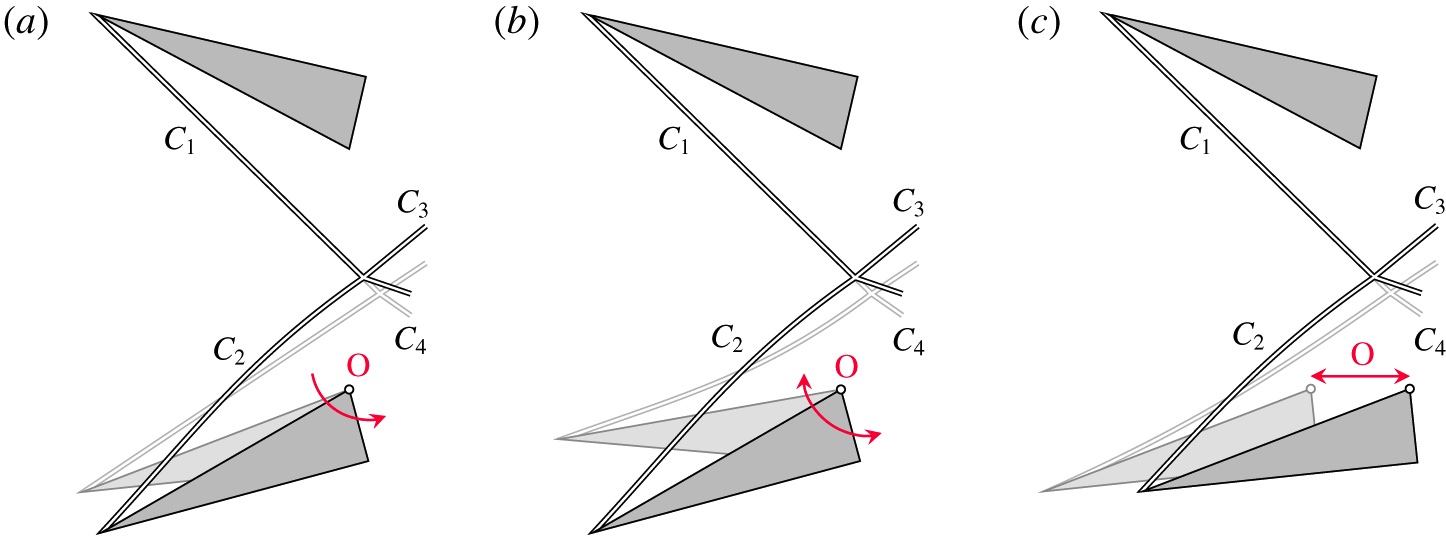L. Laguarda, S. Hickel, F.F.J. Schrijer, B.W. van Oudheusden (2020)
Journal of Fluid Mechanics 888: A18. doi: 10.1017/jfm.2020.28
The response of asymmetric and planar shock interactions to a continuous excitation of the lower incident shock is investigated numerically. Incident shock waves and centred expansion fans are generated by two wedges asymmetrically deflecting the inviscid free stream flow at Mach 3.
The excitations mechanisms considered are (i) pitching of the lower wedge traversing the steady-state dual-solution domain (DSD) of regular interaction (RI) and Mach interaction (MI), (ii) a periodic (sinusoidal) oscillation of the lower wedge deflection with a mean value both within and outside of the steady-state DSD and (iii) a periodic (sinusoidal) streamwise oscillation of the lower wedge location with fixed wedge deflection. A detailed analysis of characteristic unsteady flow features, including the Mach stem growth, pressure evolution across the shock system and corresponding flow deflections and entropy rise, is presented with a focus on the bi-directional RI⇄MI transition process. For fast pitching conditions, the MI pattern is maintained far inside the steady-state RI domain. The observed MI→RI transition limit as the rotational velocity decreases does not fully match steady-state theory, however. This is attributed to geometry-related effects. In the opposite case, RI→MI transition, good agreement with steady-state theoretical predictions is obtained for slow rotations, and a shock polar analysis applied in the (moving) frame of reference of the shock interaction location improves the agreement with fast pitching numerical data significantly. Furthermore, the MI pattern is found to be more robust against periodic perturbations than the corresponding RI configuration for mean flow conditions inside the steady-state DSD, which appears to be a consequence of the dynamics of the Mach stem during a period of excitation. This is not the case for mean flow conditions outside the steady-state DSD in the RI domain for which a periodic RI→MI→RI alternation occurs instead.

Animation for fast streamwise excitation, case (c) in the figure above, showing the density gradient magnitude, with the sonic condition M=1 highlighted by yellow solid lines.
